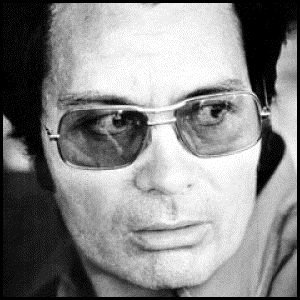The Untold Story of Hope,
Deception, and Survival at Jonestown
Julia Scheeres
(Free Press)

But he did it with a difference. Instead of getting on the church members for their sins, he got on the other churches of the area for their sins. In 1961, he said that all the places of God's word were sancrosect. "The most segregated hour in America is the Sunday morning worship hour," Jones told his congregation. To prove it, after concluding worship at the Temple, "he'd drive a group of black members to a white neighborhood."
- Led by their fearless pastor, the visitors would walk into a church, politely greet the ushers, and wait to be seated. Jones called this "witnessing to integration."
All this before the Civil Rights Act. No wonder his black worshipers at the temple worshipped him too ... even stayed with him until the very bitter end. And beyond.
Jones was a character, and in the battle for integration, made himself and his church a model for liberals. After he moved the whole kit-and-kaboodle to California, he became a familiar to George McGovern, Harvey Milk, George Moscone, and Father Divine, among others. When they were in Redwood Valley, Temple members worked to cure heroin addicts, "helped single mothers pay for schoolbooks and clothes. They brought destitute seniors to doctors for checkups."
- Jones's ministry was based on kindness. In return, the new acolytes pledged him their unswerving loyalty.
The heart of A Thousand Lives is Jones and his followers going from bucolic Redwood Valley to the rain-forest of northwestern Guyana --- moving into what finally became a hothouse prison for most of them, ending up in a mass poisoning of over 900 of these people (including at least three hundred children).
The bare facts of the story are gripping. For not only is it a tale of a dynamic, charismatic man going bananas, it's the story of hundreds of devoted followers going along with him to the end. At the finale there, in late fall 1978, there was but one person of the hundreds in the pavilion to stand up to him ... to question the rightness of his decree that they should all die as martyrs to his "religious socialism."
Christine Miller said: "I feel that as long as there's life, there's hope. That's my faith ... I look at the babies and I think they deserve to live..."
Jones responded, "I agree." Then he said, "But don't they also deserve much more? They deserve peace?"
- "When we destroy ourselves," Miller continued, "we're defeated. We let them, the enemies, defeat us."
"We will win," Jones said. "We win when we go down."
"I think we all have a right to our own destiny as individuals," Miller insisted.
She was heckled by the audience (all this was captured on a tape recovered by the FBI). And, as Scheeres reports, the final event had been rehearsed and repeated, not once but several times by Jones and his followers. (Each time before, when they did the routine, Jones would substitute colored water for the cyanide.)
The big question throughout was how he did it. How did Jones even get a thousand or so people to go off to live in the rain forests of Guyana? How did he get them all to take the final sip?
The American consul at Georgetown visited the camp several times ... but despite rumors of horrendous working conditions, lack of freedom, and the violence ... no one seemed to want to leave. The consul "couldn't understand how a single man could wield that kind of power over so many people."
During Jones's speeches at the pavilion, he often ask his followers if they were willing to die for the cause. They invariably agreed. (Sometimes, the author suggests it was just the old folks wanting to get to bed, to get Jones to stop talking, let them go rest.)
Those who have studied the lives of the likes of Franco, Hitler, Mussolini and Stalin know that what Jones did was but a miniature version of 20th century statism: get control of the reins of power; invent enemies; offer suggestions on their extraordinary power (even if it is a delusionary power); block all channels of communication; make all your followers dependent on you. With all those in place, you have the power to do as you like.
Nation-states are as susceptible to cultism as small religious cults in the jungle. In a recent New Yorker, Adam Kirsch writes about the Roman emperor Caligula, who apparently indulged in an equal madness. "Why wasn't he removed from public view, and placed under the care of physicians?"
- From Stalin to Mao to Idi Amin, the twentieth century surely gave plenty of proof that psychotic leaders are not necessarily "removed from public view," and can sometimes infect whole populations with their madness."